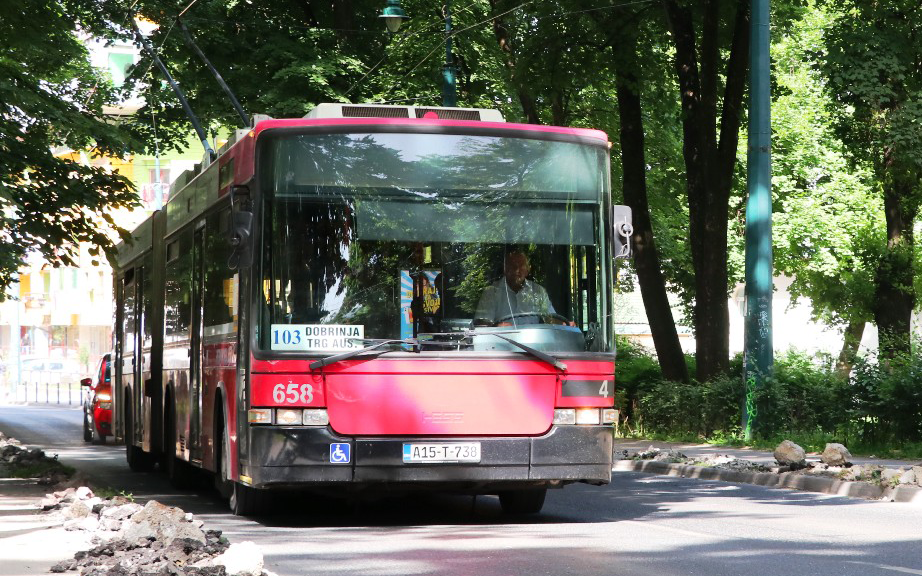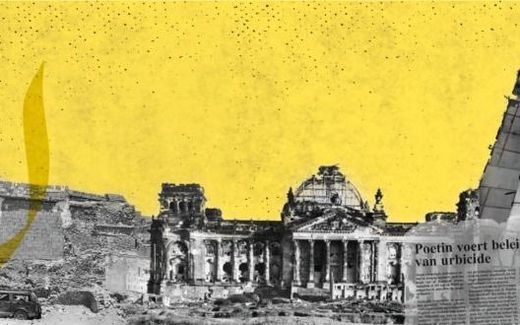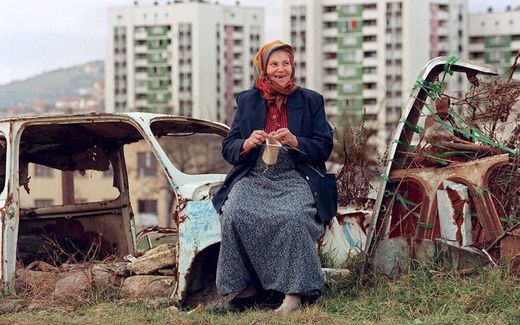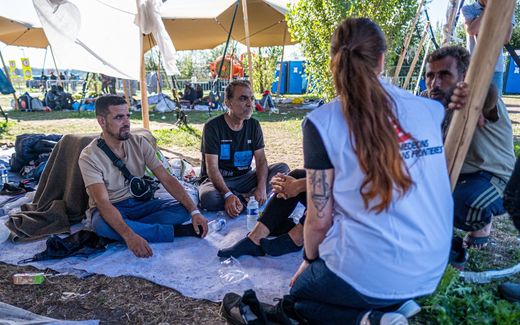Column from Sarajevo – Exploring the city of trauma
10-03-2023
Christian Life
Mirela Popaja-Hadžić, CNE.news

Photo Twitter, Vlada Kantona Sarajevo
Christian Life
A long time ago, I read a book by Sigmund Freud (Austrian neurologist and the founder of psychoanalysis) called "Civilisation and its Discontents". The book is about the tension between civilisation and the individual.
There is a constant battle between the individual longing for freedom and civilisation demanding conformity and repression of instincts. And so, individuals are constantly sending subtle and not-so-subtle messages about their feelings and this restricted freedom. I had this on my mind recently as I took the trolley bus.
Rush hour
I board the trolley bus and buy my ticket. There is no usual rush hour, so I manage to sit by the window. The trolley brings me from the centre of Sarajevo to a part of town called Dobrinja. It takes me approximately 45 min. I am going to visit my mother-in-law, who is taking care of my daughter, over the weekend.

The ride takes a long time. The trolley has seen better days. The seats are dirty. Seat handles, which used to be made from firm and thick rubber, are now entirely cut with something sharp. I am guessing a knife. All that is left of that handle is a thin metal foundation, trying to do the job of helping a person stand up from their seat. All the seats have graffiti on them. I turn my gaze to the window. The day is gloomy. It is about to rain, but all the water is contained in this gigantic cloud that hovers above Sarajevo today. The mood of the day is grey, with shades of blue.
One flower
The trolley stations are close to each other, so it feels like we stop every 30 seconds. That allows me to pay attention to details outside. A house with a bright pink facade, two stone lion statues, a white Greek-style fence, and a car wash in the garage. Next to it is a house with no facade, orange brick stone sticking like a sore thumb, new windows with white frames, and one flower in a plastic pot. Then a communist-style three floors building with a park. Trash everywhere.
A local store with veggies, fruit and balls for kids, displayed on wooden construction that can collapse at any second. A cashier sitting on a plastic chair, smoking and watching the trolleys go by. On the other side of the road, a courthouse with wires, a huge fence, security guards, and nice cars parked outside. What used to be a place for grass and greenery is now a muddy pond mixed with cigarette butts and plastic waste. I keep going. I also see some nice houses, with lovely gardens next to super modern gas stations.
And at that moment, I have an epiphany. I remember Freud's book and how we, as individuals, are sending constant messages to the world about our state of being.

What if I see evidence of these messages written in the city's architecture? It feels like I was taking a metaphorical tour of a trauma-affected brain. I was looking at the aftermath of it all. There were messages of severe depression and damage everywhere. No wonder there is trash on the streets, poorly constructed building aesthetics, and cigarette butts.
A brain suffering from trauma is a severe condition that impacts brain functions. It often results from a traumatic event experienced during great distress. The cut-out seats in the trolley bus are evidence of anxiety. This was a normal brain response to the abnormal events that occurred in the near past.
Survival mode
This brain is in survival mode. Most of the parts are not functioning correctly. It looks like it has given up on life. But what gives me hope are the attempts to create beauty as that brain tries to make life normal again. A lovely flower on a window. A modern-looking gas station. A nice house with a lovely garden. That all proves that there is still a fight going on. A battle for a life with dignity and beauty.
At that moment, I stop judging this place. Instead, I start to feel deep respect for this city-sized brain that fights to keep living, for all the resilience that developed with time. I started appreciating it all.
Trauma can destroy one's life. And that is not a pretty sight. But what amazes me is that light shines through all that darkness. And life always finds a way amid death and destruction. A time will come when the trash will be cleaned up and facades built. That must take place in order to heal. But for now, I just stand in awe at life's resilience. I highly recommend a trolley ride for great epiphany moments.
Mirela Popaja-Hadžić
Born in Sarajevo in the 1980’s. Like many others of her generation, Mirela had a front row seat to the breakup of Yugoslavia and the siege of Sarajevo.

In her twenties, Mirela realised that the war impacted her more than she had previously acknowledged. This realisation launched her into an introspective journey to grapple with and heal from her own trauma.
It also catalysed a process of theological and philosophical reflection about how to lament and embrace the hardships of life. Her own unaddressed grief and trauma surfaced. Through a therapeutic process of breathing and lament, she came to understand the importance of grief as part of the process of healing and reconciliation.
This individual healing process clarified her sense of personal calling and mission: to work for individual and collective healing through mental health and peacebuilding work. She has over 10 years of experience working in both the profit and non-profit sector in project coordination, program management, training, facilitation, and translation.
She is currently specialising in a field of Psychotherapy called Gestalt to become a trauma therapist to more effectively address the unengaged trauma manifesting in Bosnia and Herzegovina (BiH) society as depression, anxiety, and addictions. She is also an affiliate trainer with Trauma Free World and holds a Bachelor of Science in philosophy from the University of Sarajevo.
For three years, she worked as the program manager and BiH director for a US-based foundation empowering a new generation of leaders in BiH through scholarships, leadership development, and learning experiences.
Mirela thrives and has extensive experience working between cultural, religious, and ethnic groups, translating linguistically and culturally, and working with youth and young adults to build understanding and capacity for personal and communal thriving.
She lives in Sarajevo, with her husband, their daughter and two cats.
Related Articles






